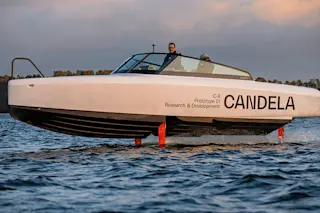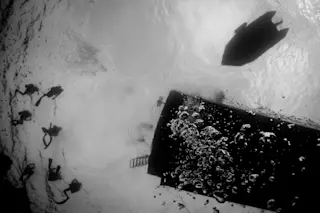A foggy windshield can drive a motorist nuts. The thousands of tiny water droplets that form on the glass scatter light, making oncoming traffic hard to see. Most solutions don't work: Antifogging sprays are short lived, and windshields coated with titanium dioxide require exposure at least every few hours to either ultraviolet or visible light.
Antifogging glass covers the lower left area of this photo. The right and top have normal glass. | Michael Rubner/MIT
To address the fog problem anew, materials scientist Michael Rubner and his colleagues at MIT turned to nanotechnology and recently announced the development of a permanent glass coating that keeps fog from forming on windshields. Rubner used nanoparticles made of silica, the same material glass is made of, to create a coating with a rough surface. Although the coating looks smooth to the naked eye, it actually contains 10 to 20 layers of particles, each ...














